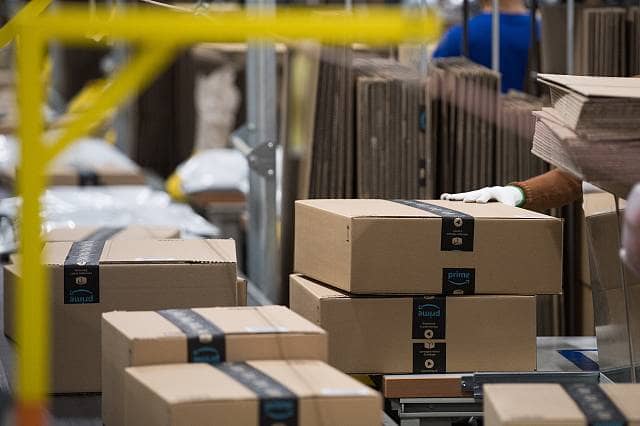The direct-to-consumer (D2C) revolution reshaped how brands build relationships and sell products. But in a saturated digital landscape, scaling beyond your own storefront has become less of a choice and more of a necessity. Enter Amazon for D2C brands—a marketplace that was once shunned by purists, now rapidly embraced by some of the most iconic D2C names in the game.
And it’s not hard to see why. When done right, the D2C model on Amazon allows brands to scale faster, learn faster, and reach customers at the precise moment they’re ready to buy.
Amazon for D2C brands: Do D2C brands sell on Amazon?
Let’s settle the question: Do D2C brands sell on Amazon? Yes—enthusiastically, strategically, and with tangible results.
Take Allbirds, Native, or Glossier. These brands, once hyper-focused on selling only via their own channels, are now making strategic bets on Amazon to grow their footprint. The reasoning is simple: Amazon is where the customer is—and that’s where modern D2C brands need to be, too.
Amazon for D2C brands isn’t about giving up control. It’s about expanding intelligently.
Here’s why it works:
- Customer Acquisition at Scale: With millions of ready-to-buy shoppers, Amazon offers unmatched reach. B2C brands on Amazon gain access to a customer base that’s primed to purchase, not just browse.
- Trust Factor: Consumers trust Amazon’s checkout, delivery, and customer service. For D2C brands, this means fewer barriers to conversion, even from first-time buyers.
- Increased Visibility: Whether you’re launching a hero SKU or testing a new category, the D2C model on Amazon helps you get in front of high-intent buyers quickly.
So yes, D2C brands sell on Amazon—and the most successful ones treat it not as a backup plan, but a key component of their omnichannel strategy.
Adapting the D2C model on Amazon without losing brand control
The fear that Amazon will “dilute the brand” is a common concern. But the reality? You can run a D2C model on Amazon that’s both performance-driven and brand-safe.
Here’s how modern D2C brands selling on Amazon maintain their identity:
- Strategic Product Selection: Many D2C brands only list their bestsellers or evergreen products on Amazon, while keeping limited editions or subscription models exclusive to their own site.
- Optimised Brand Storefronts: Through Amazon’s Brand Registry, B2C brands on Amazon can build immersive Storefronts, upload A+ content, and create a consistent visual identity across all product pages.
- Customer Re-engagement: While Amazon owns the transaction, you can still own the experience. Using branded packaging, inserts, and QR codes, D2C brands can steer customers back to their ecosystem post-purchase.
The key? Use the Amazon for D2C brands approach as a complement to your direct site, not a replacement. That way, you preserve your DNA while expanding your distribution.
Why B2C brands on Amazon must think like D2C operators
Today’s B2C brands on Amazon face fierce competition, and the ones winning are those who act like D2C founders. That means obsessing over the customer journey, refining the product-market fit, and never compromising on presentation.
Here’s what that looks like:
- Top-Tier Creative: Your product listing should function like a high-converting D2C landing page. Think conversion copy, high-res lifestyle images, and video that sells.
- User-Driven Iteration: Take advantage of Amazon’s rich review data to refine your product and positioning. It’s one of the most valuable feedback loops in ecommerce.
- Full-Funnel Strategy: Leverage Sponsored Brand Ads, Sponsored Display, and retargeting to reinforce your brand message across multiple touchpoints, just like a D2C site would.
Ultimately, Amazon for D2C brands is an opportunity to blend the scalability of a marketplace with the emotional depth of a direct brand experience.
Busting myths: Do D2C brands sell on Amazon without compromise?
Let’s unpack some of the biggest misconceptions about the D2C model on Amazon:
Myth #1: Amazon strips us of our brand identity
Reality: Amazon now offers more branding tools than ever before. From custom Storefronts to branded ads and video, D2C brands selling on Amazon have room to shine.
Myth #2: It cannibalises our own website sales
Reality: The opposite is often true. Amazon acts as a discovery engine. Many shoppers discover you on Amazon and later convert on your DTC site.
Myth #3: It’s a race to the bottom
Reality: Not if you’re thoughtful. Premium pricing still works if you communicate your value. B2C brands on Amazon that focus on quality and brand equity stand out in a sea of lookalikes.
The winning formula: How to succeed with the D2C model on Amazon
Whether you’re just exploring or ready to dive in, here’s your blueprint to thrive:
- Start with your core products – Don’t list everything at once. Focus on your proven winners.
- Invest in Amazon SEO and paid strategy – Great listings and targeted ads are non-negotiables.
- Protect your brand – Enroll in Brand Registry. Optimise your IP. Monitor resellers.
- Track, test, iterate – Treat Amazon as an extension of your business intelligence. Use data to inform decisions on price, positioning, and expansion.
Amazon for D2C brands becomes much more powerful when you’re not doing it alone—and the right Amazon PPC agency can fast-track your success across Sponsored Products, Brand Ads, and beyond. Remember: Amazon for D2C brands isn’t about abandoning what made you successful—it’s about amplifying it.
Final thoughts
So, do D2C brands sell on Amazon in 2025? Not only do they sell—they thrive.
Amazon has evolved from a threat into a strategic growth lever for forward-thinking D2C brands. With the right approach, the D2C model on Amazon becomes a powerful fusion of reach, trust, and data, without sacrificing identity or experience.
B2C brands on Amazon that embrace this mindset are building not just higher sales, but stronger brands.
If you’re ready to scale, meet your next customer, and grow intelligently, Amazon might just be your most underutilized channel.






Leave a Comment